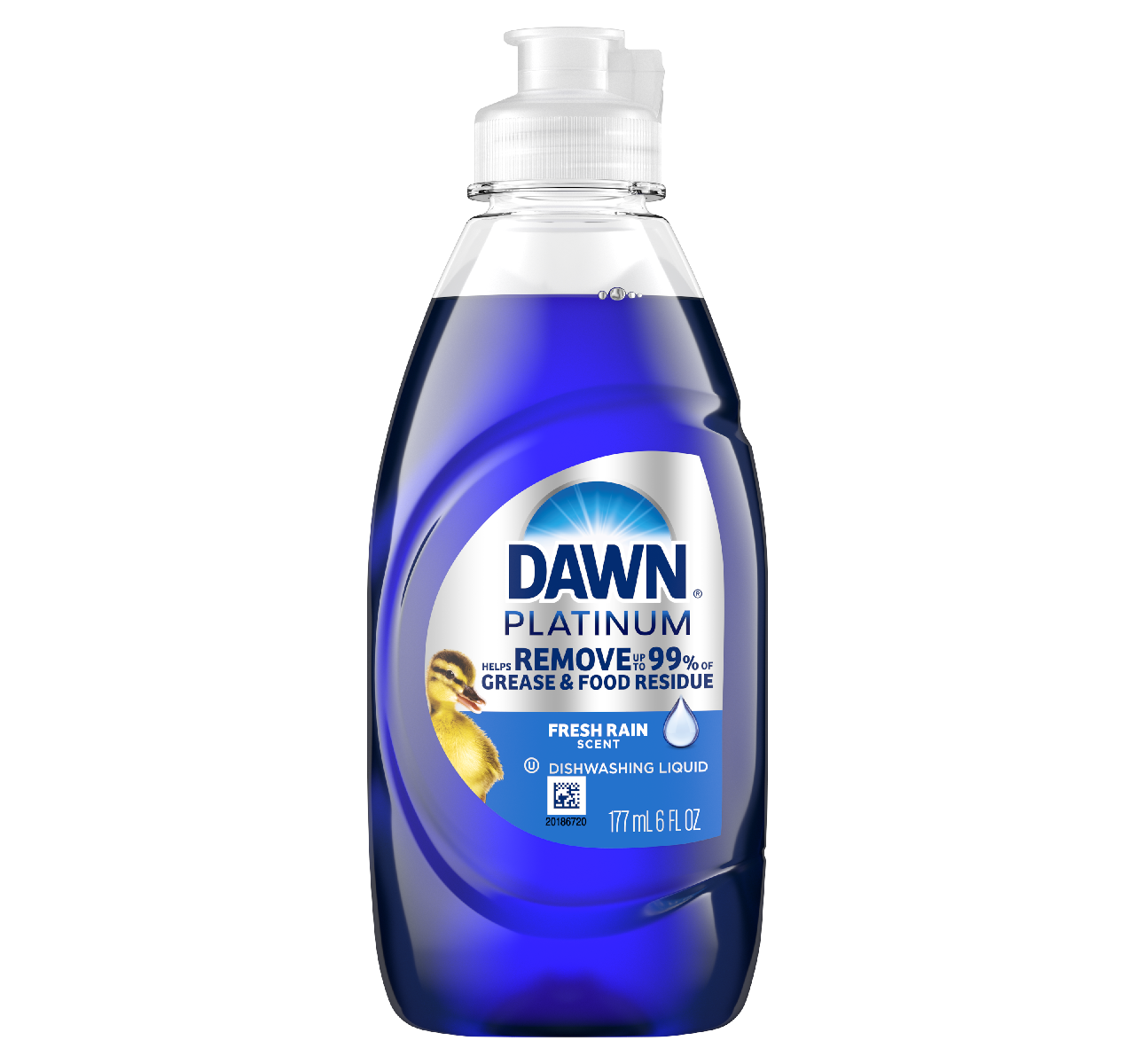How to Clean Your Stovetop
Your kitchen is likely the most-used room in your home and the stovetop can be one of the dirtiest surfaces—especially when it’s time to cook big family dinners! Before your blood starts boiling about the cleaning, simmer down. Here’s everything you need to know on how to clean your stovetop—and keep it clean.
Step-by-Step Guide on How to Clean a Greasy Stovetop
No matter what kind of stovetop you have, you can keep it clean by following these easy steps.

1. Gather Your Cleaning Supplies.
Here’s everything you’ll need to get that stovetop grease-free:
Concentrated dish soap that’s tough on stains, splatters, and grease while staying gentle on your cooktop, like Dawn® Platinum
Soft, reusable cloth and sponge
Water
2. Turn Off the Stove.
It’s very important to make sure the stove is completely off and cool to the touch before you start cleaning.
3. Lather Up.
Use Dawn® Platinum. Apply a squirt of Dawn® to a bowl of warm water, then dip the sponge in. Squeeze the sponge until suds form.
4. Wipe Out.
Test on inconspicuous area first. If the surface doesn’t appear to be damaged, then proceed to scrubbing away. Scrub the greasy surface back and forth following the grain, if applicable, until the soil is removed.
5. Tough It Out.
For stubborn stains, apply Dawn® Platinum directly to the soft side of a sponge and scrub the surface until the grease is removed.
6. Rinse Away.
Wipe down the stove and remove the remaining grease and excess soap with a damp paper towel or soft, reusable cloth. Excess residue may lead to etching on certain materials.
7. Time to Dry.
Immediately dry the surface with a clean paper towel or soft, reusable cloth. Excess residue may lead to etching on certain materials.
Great job. Your stovetop is back in tip-top shape. To help keep it that way, be sure to keep your favorite bottle of Dawn® dish soap on hand!
Why Stovetops Get So Greasy
Cooking on the stovetop is bound to leave behind a mess—sauces boil over, bacon grease splatters, and those few stray noodles always seem to make their way out of the pot—especially when your little ducklings are helping out!
When food splatter cools down and solidifies, you're left with that thick, sticky, hard-to-clean paste. Thankfully, Dawn® Platinum makes the grease cleanup So Dawn Easy!
Types of Stoves and Stovetops
For those of us who love to cook, it really shows! Especially when it comes to our stovetops—all those splatters, grease, and food stains tend to make themselves right at home. Depending on the type of stove and cooktop you have, your cleaning method may vary.
Stovetops differ in power source, like gas or electric; the material they’re from, such as glass or ceramic; and the even the number of burners you’ll have to wipe down.
Let’s start with the most common types of stoves that can be found in most homes:
Gas stoves: One of the most common types of stoves, gas stoves are powered by gas or propane. The flame is released from the burners, conveniently set inside a grate. These are considered to be the most convenient stove option, since practically all cookware can be used on it. Plus, most home cooks find that a gas stove gives them more control over the heat applied while cooking.
Electric stoves: Electric stoves come with a number of cooktops—coil, induction, and smooth. The latter two are more modern in appearance but may not be compatible with all cookware; however, because of how flat these stovetops are they are often easier to clean.
Wood-burning stoves: Considered to be more old-fashioned than gas or electric, these stoves use wood as their primary heat source. They are usually made from cast iron or steel and are generally considered to be more energy efficient.
Typical stovetops include:
Gas stovetop: Flames are released from the burners that are often under a grate; prior to cleaning it’s important to ensure all the burners are off.
Electric coil stovetop: Often the least expensive stove option, these are made up of metal spirals with an electric wire into the coils.
Electric smooth-top: Made out of either ceramic or glass, these stovetops are modern in appearance and have burner outlines printed directly within the glass.
Induction stovetop: More expensive than other stovetops, induction cooktops feature a magnetic field below the smooth-top as their primary source of heat. Only induction-compatible cookware can be used.
Modular stovetop: A combination of gas, electric, and induction burners, this type of stovetop is customizable to deliver the best of all worlds when it comes to heating and cooking.
How to Clean the Different Types of Stovetops
Some stovetops require a bit more elbow grease, while others need special treatment to avoid any damage to the surface. Here’s a quick guide on cleaning the different types of stovetops, so you can worry less about housekeeping and more about spending time with your family.
GAS STOVETOP | ELECTRIC COIL STOVETOP | ELECTRIC SMOOTH-TOP | INDUCTION STOVETOP | MODULAR STOVETOP | |
|---|---|---|---|---|---|
Component | Grates, Burners, Stovetop Surface | Electric Coils/spirals, Stovetop Surface | Smooth/solid surface, Embedded Burners | Smooth/solid surface, Embedded Burners | Grates, Burners (Multiple types, Surface) |
Cleaning Difficulty | More difficult due to multiple components | Coils can trap messes, be cautious when cleaning | Easily wipe down with non-abrasive cleaning tools, try Dawn® Platinum for burnt-on grease and food | Easily wipe down with non-abrasive cleaning tools, try Dawn® Platinum for burnt-on grease and food | More difficult due to multiple components |
Cleaning Frequency | At least once a month, or more frequently if used often | Every 2 weeks or once a month, depending on usage | Daily, or after each use. Minimum once a week | Daily, or after each use. Minimum once a week | Daily, or after each use. Minimum once a week |
Watch-outs | Turn all burners off when cleaning | Ensure all coils are turned off before wiping down | Avoid food falling onto burner area—this can make it difficult to clean, especially sugary foods. Be careful when wiping down glass top as it can scratch easily | Use only induction-compatible cookware, wipe down with non-abrasive cloth when cleaning to avoid scratching surface | Keep water away from electric burner openings. Easily wipe down solid tops, be careful not to scratch surface |
To avoid damaging your stovetop, always use a non-abrasive cloth and gentle cleaner. Dawn® dish soap makes cleaning stovetop surfaces So Dawn Easy - whether it's glass, ceramic, enamel, or stainless steel. The unique formula quickly breaks down grease particles while staying gentle enough to not cause any damage.


